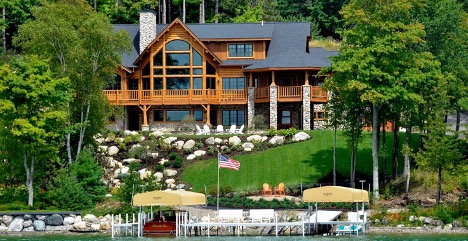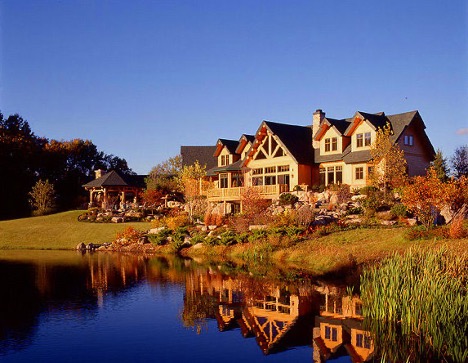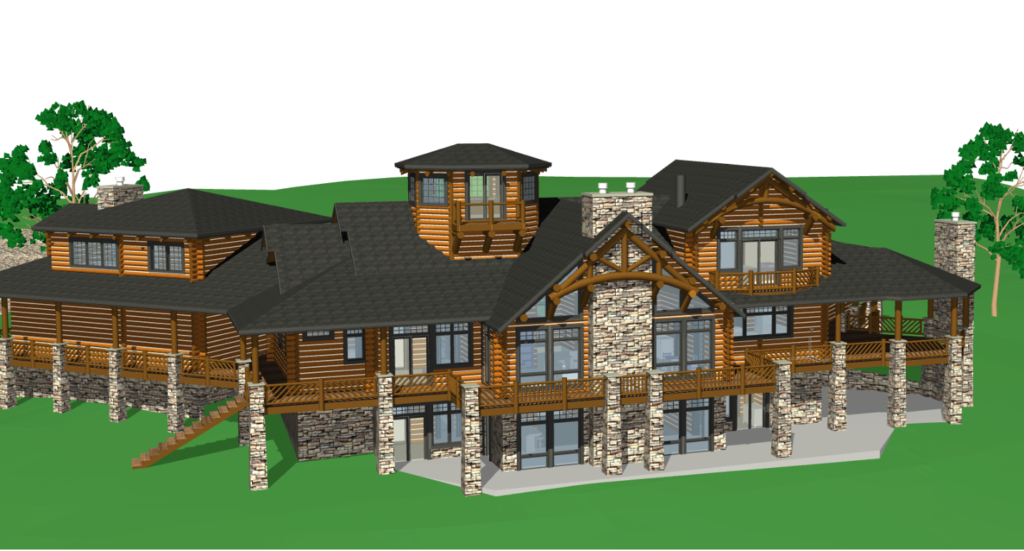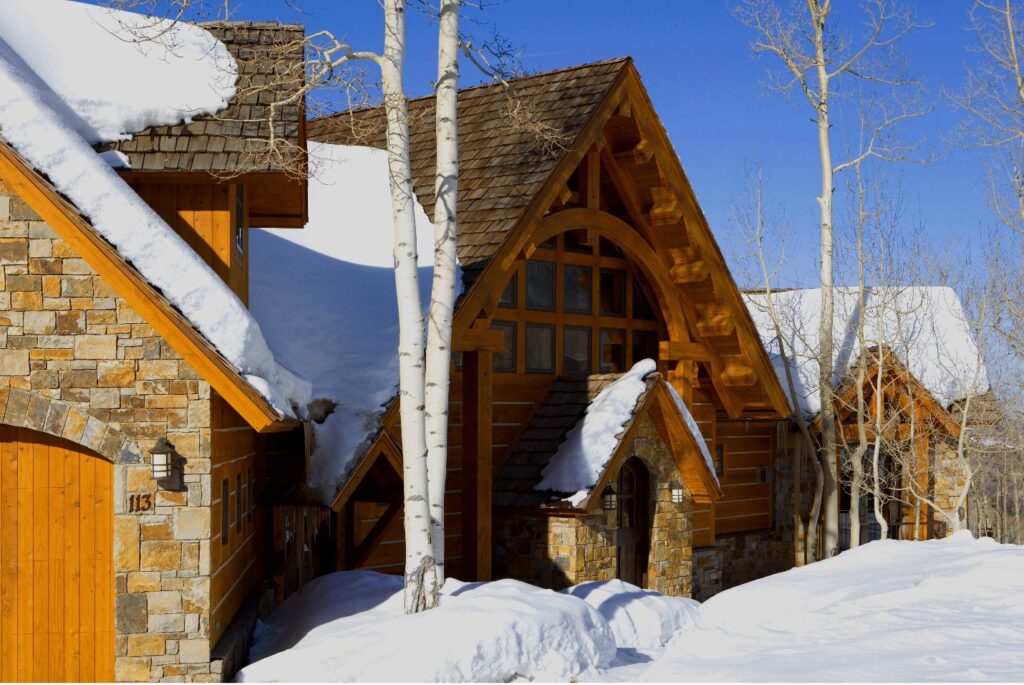Cabin Fever
What would you picture if I asked you to close your eyes and imagine a cottage? Would it be a cozy wood-sided house in a beach town, a quaint thatched-roof home in the countryside, or maybe a Tudor-style house straight out of a fairytale? As it turns out, after researching this concept a bit more in depth, none of those images is technically wrong, even though those houses are quite different.
The term “cottage” and the house style most closely associated with it originated in England during the Middle Ages. Peasant farmers were known as “cotters,” and their modest, rural homes came to be called cottages. Even today, a cottage-style house in the has the same description it did hundreds of years ago—the homes are simple dwellings meant to fight off the cold, typically with one large living room downstairs and two bedrooms upstairs. The word “cottage” has been around for a long time, and thanks to its usage by different cultures and communities, it’s come to describe a category of house, not one specific architectural style. This “category” has further expanded to include words like “lodge”, “chalet” and, our favorite, “cabin”.
How these terms have evolved from their historic beginnings and uses to where they are used today, particularly by our clients, is a study in perspective…
From a compilation of generally accepted definitions and online resources:
house (n.)
Old English hus “dwelling, shelter, building designed to be used as a residence,” from Proto-Germanic *hūsan (source also of Old Norse, Old Frisian hus, Dutch huis, German Haus), of unknown origin, perhaps connected to the root of hide (v.) [OED]. In Gothic only in gudhus “temple,” literally “god-house;” the usual word for “house” in Gothic being according to OED razn.
cottage (n.)
late 14c., “a cot, a humble habitation,” as of a farm-laborer, from Old French cote “hut, cottage” + Anglo-French suffix -age (according to OED the whole probably denotes “the entire property attached to a cote”). Old French cot is probably from Old Norse kot “hut,” cognate of Old English cot, cote “cottage, hut,” from Proto-Germanic *kutan (source also of Middle Dutch cot, Dutch kot).
cabin (n.)
mid-14c., “small house or habitation,” especially one rudely constructed, from Old French cabane “hut, cottage, small house,” from Old Provençal cabana, from Late Latin capanna “hut” (source also of Spanish cabana, Italian capanna); a word of doubtful origin. Modern French cabine (18c.), Italian cabino are English loan-words.
lodge (n.)
Middle English logge, mid-13c. in surnames and place names; late 13c. as “small building or hut,” from Old French loge “arbor, covered walk; hut, cabin, grandstand at a tournament” (12c.), from Frankish *laubja “shelter” (cognate with Old High German louba “porch, gallery,” German Laube “bower, arbor”), from Proto-Germanic *laubja- “shelter.” On a widespread guess (backed by Watkins, OED) this likely originally meant “shelter of foliage,” or “roof made from bark,” and is from the same PIE root as leaf (n.).
Modern spelling is from c. 1500. The specific sense “hunter’s cabin” is first recorded late 14c. Sense of “local branch of a society” is first recorded 1680s, of Freemasons, from an earlier use of lodge as “workshop of a group of masons” (mid-14c.). In the New World the word was used of certain American Indian buildings (1805), hence lodge-pole (1805) and lodge-pole pine (1859).
chalet (n.)
1782, “hut or cabin in the Swiss mountains for cattle and herdsmen to shelter for the night,” from Swiss-French chalet “herdsman’s hut, Alpine cottage,” probably a diminutive of Old French chasel “farmhouse, house, abode, hut,” perhaps from Vulgar Latin *casalis “belonging to a house,” from Latin casa “house;” or from Old Provençal cala “small shelter for ships,” from a pre-Latin language [Barnhart].
Now, from our clients’ generally accepted definitions:
House:

Log Home, often overheard when someone meets this client “So, I heard you live in a log cabin?”
Cottage:

More specifically referred to by client/friends, “Come out to the lake cottage.”
Cabin:

“Our cabin up north.”
Lodge:

“I want a hunting lodge for me and my buddies for deer camp”
Chalet:

“Just something like a chalet for us in the mountains.”
While researching, also came across this nugget from a nationally known realty house’s web site:
The choice between a cottage and a cabin is one that many people face when considering a rustic retreat or vacation home. Both offer a quaint and cozy atmosphere that provides a break from the hustle and bustle of daily life. However, there are distinct differences between a cottage and a cabin that can influence the decision-making process. Whether you are a nature lover seeking solitude or a family looking for a cozy weekend getaway, this guide will provide valuable insight into these two popular types of vacation homes.
- A cabin cannot be a cottage or vice versa. Each type of building is distinct in its building materials, location, facilities, and look.
- Cottages and cabins often use natural resources like firewood to produce heat in cold climates.
- Cottages and cabins can have lawns. A cabin may be surrounded by grass, mud or even gravel, while a cottage is likely to be surrounded by grass.
- Cottages are usually equipped with electricity and water so inhabitants can enjoy modern conveniences. When you hear of people purchasing a holiday home, it is usually a cottage, not a cabin.
- A cabin is a small dwelling constructed from logs and other simple materials from the land and is often associated with first-generation homes built by settlers. They can usually be found nestled in remote or wooded areas like forests and mountains and not necessarily near any water. Cabins are typically smaller than cottages and have a more rustic feel. They usually do not come with utilities like electricity and water…



